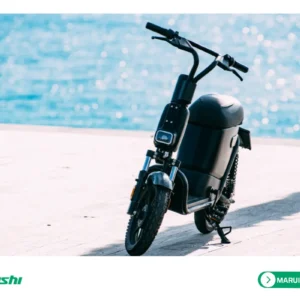[Ebook Việt Hóa] Bike Fit (2022): Thuật ngữ
Nguồn: Ebook Bike Fit – 2nd Edition Optimise Your Bike Position for High Performance and Injury Avoidance (2022) –
Biên tập: #dungcaxinh Team
Thuật ngữ
- Điều chỉnh vừa vặn – một quá trình điều chỉnh xe đạp sao cho phù hợp với sự thiếu linh hoạt hoặc các vấn đề của người sử dụng – xe đạp sẽ được điều chỉnh theo cơ thể người sử dụng chứ không phải ngược lại.
- Giảm chấn – hấp thụ hoặc làm dịu rung động. Trong đạp xe, đó là quá trình cơ thể và xe đạp hấp thụ rung động và lực tạo ra từ đường.
- Cơ bi-articular – một cơ băng qua hai khớp trong cơ thể và có thể thực hiện hai chức năng. Điều này rất hiếm. Phần lớn các cơ là cơ đơn khớp.
- BDC – điểm chết dưới – vị trí của bàn đạp khi nó ở vị trí 6 giờ hoặc ở đáy của hành trình.
- Hệ số ma sát – một con số được tạo ra từ một phương trình để biểu thị lượng ma sát tác động lên người đạp xe và xe đạp.
- Co cơ đồng tâm – một sự co cơ trong đó cơ ngắn lại, ví dụ: nâng một lon lên vai – cơ bắp tay ngắn lại khi co đồng tâm.
- CONI – Ủy ban Olympic Quốc gia Ý (Comitato Olimpico Nazionale Italiano).
- Mặt phẳng vành – xem ‘mặt phẳng trán’.
- Cortisone – một loại steroid được sử dụng để kiểm soát viêm nhiễm.
- Tay đòn của tay quay – tay đòn kết nối bàn đạp với xích và xe đạp.
- Xích – bánh răng trước của bộ bánh xe đạp, đẩy xích và xe đạp tiến lên.
- Phần tay cầm – phần cong của tay cầm xe đạp mà người lái có thể nắm.
- Vừa động – quá trình điều chỉnh xe đạp bao gồm thu thập dữ liệu khi người lái đang đạp xe.
- Co cơ lệch tâm – sự co cơ trong đó cơ dài ra nhưng vẫn co lại, ví dụ: từ từ hạ một lon từ vai xuống bên hông – cơ bắp tay từ từ dài ra – co cơ lệch tâm.
- EMG (điện cơ đồ) – các điện cực được đặt trên da ghi lại hoạt động điện bên dưới khi cơ co.
- Cơ evertor – một cơ ở chân dưới giúp di chuyển chân ra ngoài.
- Fascia – mô liên kết bao phủ cơ và gân.
- Xương đùi – xương đùi.
- Khoảng điều chỉnh – khoảng cách – ví dụ về chiều cao yên xe – trong đó một người có thể được coi là ở vị trí tốt.
- Float – thuật ngữ chỉ sự di chuyển tự do khi kẹp được gắn vào hệ thống bàn đạp không có hoặc cố định.
- Mặt phẳng trán – còn gọi là mặt phẳng vành, đây là mặt phẳng thẳng đứng chia cơ thể thành phần trước (trước) và phần sau (sau). Đây là một trong những mặt phẳng của cơ thể được sử dụng để mô tả vị trí của các bộ phận cơ thể trong mối quan hệ với nhau.
- Glutei – số nhiều của ‘gluteus’ – thuật ngữ dùng để mô tả tất cả ba cơ mông tạo thành mông.
- Goniometer – một chiếc thước đo lớn được sử dụng để đo góc khớp.
- Cơ invertor – một cơ ở chân dưới giúp xoay chân vào trong.
- Tải trọng không đều – khi một khớp hoặc mô chịu trọng lượng mà nó không được thiết kế để chịu đựng hoặc chịu được.
- Co cơ đẳng trường – một sự co cơ mà cơ co lại hoặc hoạt động nhưng vẫn đứng yên, ví dụ: giữ một lon trong không trung – cơ bắp tay hoạt động đẳng trường để giữ nó ở đó.
- Góc khớp – góc tạo thành giữa hai chi khi chúng gặp nhau tại một khớp, chẳng hạn như tại đầu gối, hông hoặc khuỷu tay.
- Chuỗi động học – chuỗi các chi, cơ và khớp liên quan đến một chuyển động (kinesis).
- KOPS – đầu gối qua trục bàn đạp.
- Vừa trung tính – một quá trình điều chỉnh xe đạp đặt người dùng ở vị trí trung tính hoặc an toàn, tức là nằm trong phạm vi chấp nhận được.
- Xương bánh chè – một xương vừng ngồi giữa gân cơ tứ đầu đùi – còn được gọi là xương đầu gối.
- Peloton – tên gọi cho nhóm lớn các tay đua tạo thành trong một cuộc đua đường trường.
- Plumb bob – một trọng lượng gắn vào một đoạn dây để tìm vị trí thẳng đứng hoàn hảo, ví dụ như trong thiết lập KOPS.
- Pronation – chuyển động của bàn chân và mắt cá làm phẳng vòm bàn chân.
- Pursuiting – môn thể thao trong đó một tay đua (hoặc nhóm tay đua) đuổi theo một tay đua khác (hoặc nhóm) quanh sân vận động hoặc vòng đua.
- Cơ tứ đầu – nhóm bốn cơ ở phía trước đùi giúp mở rộng hoặc duỗi thẳng đầu gối.
- Rectus femoris – cơ lớn của cơ tứ đầu.
- Mặt phẳng dọc – mặt phẳng thẳng đứng chạy từ phía trước đến phía sau chia cơ thể thành hai nửa bên phải và bên trái.
- Vừa tĩnh – một quá trình điều chỉnh xe đạp diễn ra khi người lái đứng yên trên xe đạp, tức là không đạp xe.
- Supination – chuyển động của bàn chân và mắt cá làm vòm bàn chân cong lên.
- TDC – điểm chết trên – vị trí của bàn đạp khi nó ở vị trí 12 giờ hoặc ở vị trí trên cùng của hành trình.
- Toggling – chuyển động quá mức từ bên này sang bên kia tại điểm kẹp bàn đạp do kẹp bị mòn.
- Moment xoắn – lượng ‘lực xoay’ quay một vật thể quanh một trục.
- Chuỗi moment xoắn – mô tả các cơ chân tham gia vào việc sản xuất moment xoắn trong đạp xe.
- Mặt phẳng ngang – một mặt phẳng tưởng tượng chia cơ thể thành phần trên (trên) và phần dưới (dưới). Nó vuông góc với mặt phẳng vành và mặt phẳng dọc.
- Valgus – từ tiếng Latin có nghĩa là ‘hướng về đường giữa’ – người có đầu gối quỳ có đầu gối valgus. Trong đạp xe và điều chỉnh xe đạp, ‘valgus bàn chân trước’ liên quan đến việc bàn chân bị nghiêng sao cho ngón chân nhỏ cao hơn ngón chân lớn, điều này có thể được điều chỉnh bằng cách sử dụng một miếng đệm để nghiêng bàn chân theo hướng ngược lại.
- Varus – thuật ngữ tiếng Latin có nghĩa là ‘xa đường giữa’ – người có đầu gối mở rộng có tư thế đầu gối varus. Trong đạp xe và điều chỉnh xe đạp, ‘varus bàn chân trước’ liên quan đến việc bàn chân bị nghiêng sao cho ngón chân lớn cao hơn ngón chân nhỏ, điều này có thể được điều chỉnh bằng cách sử dụng một miếng đệm để nghiêng bàn chân theo hướng ngược lại.
- Thông gió – hành động hít thở – làm đầy và làm rỗng phổi không khí.
- UCI – Liên đoàn Xe đạp Quốc tế – cơ quan quản lý thế giới về xe đạp.
Đọc thêm và các trang web hữu ích
- A. Baker, Bike Fit (4th edn, Argo Publishing/Arnie Baker Cycling, 2009), ebook available from roadbikerrider.com.
- A. Pruitt, Andy Pruitt’s Complete Medical Guide for Cyclists (Velopress, 2006).
- Bisi, M., Ceccarelli, M., Riva, F., & Stagni, R. (2012). Biomechanical and metabolic responses to seat-tube angle variation during cycling in triathletes. Journal of Electromyography and Kinesiology, 22, 845–851. [PubMed] [Google Scholar]
- Luca, D., & The, C. (1997). The use of surface electromyography in biomechanics. Journal of Applied Biomechanics, 13, 135–163. [Google Scholar]
- Dorel, S., Couturier, A., & Hug, F. (2009). Influence of different racing positions on mechanical and electromyographic patterns during pedaling. Scandinavian Journal of Medicine & Science in Sports, 19, 44–54. [PubMed] [Google Scholar]
- Garside, I., & Doran, D. (2000). Effects of bicycle frame ergonomics on triathlon 10-km running performance. Journal of Sports Sciences, 18, 825–833. [PubMed] [Google Scholar]
- M. Gaskin, Cycling Science: How Rider and Machine Work Together (Frances Lincoln, 2013).
- Gregor, R., Conconi, F., & Broker, J. (2000). Biomechanics of road cycling. In R. Gregor & F. Conconi (Eds.), Road Cycling (pp. 18–39). Oxford: Blackwell Science. [Google Scholar]
- Hausswirth, C., Vallier, J., Lehenaff, D., Brisswalter, J., Smith, D., Millet, G., & Dreano, P. (2001). Effect of two drafting modalities in cycling on running performance. Medicine & Science in Sports & Exercise, 33, 485–492. [PubMed]
- Heil, D., Wilcox, A., & Quinn, C. (1995). Cardiorespiratory responses to seat-tube angle variation during steady-state cycling. Medicine & Science in Sports & Exercise, 27, 730–735. [PubMed]
- Hermens, H., Freriks, B., Disselhorst-Klug, C., & Rau, G. (2000). Development of recommendations for SEMG sensors and sensor placement procedures. Journal of Electromyography and Kinesiology, 10, 361–374. [PubMed] [Google Scholar]
- Herzog, W., Guimaraes, A., Anton, M., & Carter-Erdman, K. (1991). Moment-length relations of rectus femoris muscles of speed skaters/cyclists and runners. Medicine & Science in Sports & Exercise, 23, 1289–1296. [PubMed]
- J. Hopker & S. Jobson, Performance Cycling: The Science of Success (Bloomsbury, 2012).
- Hug, F., & Dorel, S. (2009). Electromyographic analysis of pedaling: A review. Journal of Electromyography and Kinesiology, 19, 182–189. [PubMed]
- Jeukendrup, A., Craig, N., & Hawley, J. (2000). The bioenergetics of world-class cycling. Journal of Science and Medicine in Sport, 3, 414–433. [PubMed]
- Jorge, M., & Hull, M. (1986). Analysis of EMG measurements during bicycle pedaling. Journal of Biomechanics, 19, 683–694. [PubMed]
- LaFortune, M., Cavanagh, P., Valiant, G., & Burke, E. (1983). A study of the riding mechanics of elite cyclists. Medicine & Science in Sports & Exercise, 15, 113. [Google Scholar]
- Mahony, N., Donne, B., & O’Brien, M. (1999). A comparison of physiological responses to rowing on friction-loaded and air-braked ergometers. Journal of Sports Sciences, 17, 143–149. [PubMed]
- Mujika, I., & Padilla, S. (2001). Physiological and performance characteristics of male professional road cyclists. Sports Medicine, 31, 479–487. [PubMed]
- Price, D., & Donne, B. (1997). Effect of variation in seat tube angle at different seat heights on sub-maximal cycling performance in man. Journal of Sports Sciences, 15, 395–402. [PubMed]
- Raasch, C., Zajac, F., Ma, B., & Levine, W. (1997). Muscle coordination of maximum speed pedaling. Journal of Biomechanics, 30, 595–602. [PubMed]
- Rankin, J., & Neptune, R. (2010). The influence of seat configuration on maximal average crank power during pedaling: A simulation study. Journal of Applied Biomechanics, 26, 493–500. [PubMed]
- Reiser, R., Peterson, M., & Broker, J. (2002). Influence of hip orientation on Wingate power output and cycling technique. Journal of Strength and Conditioning Research, 16, 556–560. [PubMed]
Thư mục
- Ricard, M., Hills-Meyer, P., Miller, M., & Michael, T. (2006). The effects of bicycle frame geometry on muscle activation and power during a Wingate anaerobic test. Journal of Sports Science and Medicine, 5, 25–32. [PMC free article] [PubMed] [Google Scholar]
- Ryan, M., & Gregor, R. (1992). EMG profiles of lower extremity muscles during cycling at constant workload and cadence. Journal of Electromyography and Kinesiology, 2, 69–80. [PubMed] [Google Scholar]
- Savelberg, H., van de Port, I., & Willems, P. (2003). Body configuration in cycling affects muscle recruitment and movement pattern. Journal of Applied Biomechanics, 19, 310–324. [Google Scholar]
- Silder, A., Gleason, K., & Thelen, D. (2011). Influence of bicycle seat tube angle and hand position on lower extremity kinematics and neuromuscular control: Implications for triathlon running performance. Journal of Applied Biomechanics, 27, 297–305. [PubMed]
- Winter, D., & Yack, H. (1987). EMG profiles during normal human walking: Stride-to-stride and inter-subject variability. Electroencephalography and Clinical Neurophysiology, 67, 402–411. [PubMed]
Websites
- Retul. (n.d.). Retrieved from retul.com
- CycleFit. (n.d.). Retrieved from cyclefit.com
- BikeFit. (n.d.). Retrieved from bikefit.com
- Slowtwitch. (n.d.). Retrieved from slowtwitch.com
- Anderson, J., & Sockler, J. (1990). Effects of orthoses on selected physiological parameters in cycling. Sports Medicine, 80(3), 161–165.
- Ashe, M. C., Scroop, G. C., Frisken, P. I., Amery, C. A., Wilkins, M. A., & Khan, K. M. (2003). Body position affects performance in untrained cyclists. British Journal of Sports Medicine, 37(5), 441–444.
- Barratt, P. R., Korff, T., Elmer, S. J., & Martin, J. C. (2011). Effect of crank length on joint-specific power during maximal cycling. Medicine and Science in Sports and Exercise, 43(9), 1689–1697.
- Bini, R. (2012). Patellofemoral and tibiofemoral joint forces in cyclists and triathletes: Effects of saddle height. Journal of Science of Cycling, 1(1), 9–14.
- Böhm, H., Siebert, S., & Walsh, M. (2008). Effects of short-term training using SmartCranks on cycle work distribution and power output during cycling. European Journal of Applied Physiology, 103, 225–232.
- Braeckevelt, I. J., De Bock, I. J., Schuermans, J., Verstockt, S., Witvrouw, E., & Dierckx, J. (2019). The need for data-driven bike fitting: Data study of subjective expert fitting. In 7th International conference on Sport Sciences Research and Technology (icSports 2019) (pp. 181–189). SCITEPRESS (Science and Technology Publications).
- Broker, J. P., & Gregor, R. J. (1993). Mechanical energy management in cycling: Hamstrings and gastrocnemius intercompensate to balance system energy. Department of Physiological Science, University of California, Los Angeles.
- Burnett, A., Cornelius, M., Dankaerts, W., & O’Sullivan, P. (2004). Spinal kinematics and trunk muscle activity in cyclists: A comparison between healthy controls and non-specific chronic low back pain subjects: A pilot investigation. Manual Therapy, 9(4), 211–219.
- Clarsen, B., Krosshaug, T., & Bahr, R. (2010). Overuse injuries in professional road cyclists. American Journal of Sports Medicine, 38(12), 2494–2501.
- Davids, K., Glazier, P., & Ara, D. (2003). Movement systems as dynamical systems: The functional role of variability and its implications for sports medicine. Sports Medicine, 33(4), 245–260.
- Ellis, R., Hing, W., & Reid, D. (2007). Iliotibial band friction syndrome: A systematic review. Manual Therapy, 12, 200–208.
- Elmer, S. J., Barratt, P. R., Korff, T., & Martin, J. C. (2011). Joint-specific power production during submaximal and maximal cycling. Medicine and Science in Sports and Exercise, 43(10), 1940–1947.
- Ericson, M., & Niesell, R. (1986). Tibiofemoral joint forces during ergometer cycling. American Journal of Sports Medicine, 14(4), 285–290.
- Ericson, M., Ekholm, J., Svensson, O., & Nisell, R. (1985). The forces of ankle joint structures during ergometer cycling. Foot & Ankle, 6(3), 135–142.
- Ericson, M., Niesell, R., Arborelius, U., & Ekholm, J. (1985). Muscle activity during ergometer cycling. Scandinavian Journal of Rehabilitation Medicine, 17, 53–61.
- Farrell, K., Reisinger, K., & Tillman, M. (2003). Force and repetition in cycling: Possible implications for iliotibial band friction syndrome. Knee, 10(1), 103–109.
- Ferrer-Roca, V., Roig, A., Galilea, P., & García-López, J. (2012). Influence of saddle height on lower limb kinematics in well-trained cyclists: Static vs. dynamic evaluation in bike fitting. The Journal of Strength & Conditioning Research, 26(11), 3025–3029. doi: 10.1519/JSC.0b013e318245c09d.
- Francis, P. (1986). Injury prevention for cyclists: A biomechanical approach. In E. R. Burke (Ed.), Science of Cycling (pp. 145–184). Champaign, IL: Human Kinetics.
- Fredericson, M., Cookingham, C., Chaudhari, A., Dowdell, B., Oestreicher, N., & Sahrmann, S. (2000). Hip abductor weakness in distance runners with iliotibial band syndrome. Clinical Journal of Sport Medicine, 10, 169–175.
- Fulkerson, J., & Gossling, H. (1980). Anatomy of the knee joint lateral retinaculum. Clinical Orthopaedics and Related Research, 53, 183–188.
- Fulkerson, J., & Hungerford, D. (1990). Disorders of the Patellofemoral Joint. Baltimore, MD: Williams and Wilkins.
- Gregor, R., Cavanagh, P., & Lafortune, M. (1985). Knee flexor moments during propulsion in cycling: A creative solution to Lombard’s paradox. Journal of Biomechanics, 18(5), 307–316.
- Herbert, L. (1994). Patellofemoral pain syndrome: The possible role of an inadequate neuromuscular mechanism. Clinical Biomechanics, 9(2), 93–97.
- Holmes, J. C., Pruitt, A. L., & Whalen, N. J. (1991). Cycling knee injuries: Common mistakes that cause injuries and how to avoid them. Cycling Science, 3(2), 11–15.
- Holmes, J. C., Pruitt, A. L., & Whalen, N. J. (1993). Iliotibial band syndrome in cyclists. American Journal of Sports Medicine, 21(3), 419–424.
- Holmes, J. C., Pruitt, A. L., & Whalen, N. J. (1994). Lower extremity overuse in bicycling. Clinical Sports Medicine, 13(1), 187–205.
- Horton, M., & Hall, T. (1989). Quadriceps femoris angle: Normal values, and relationships with gender and selected skeletal measures. Physical Therapy, 69(11), 897–901.
- Hug, F., & Dorel, S. (2009). Electromyographic analysis of pedaling: A review. Journal of Electromyography and Kinesiology, 19(2), 182–198.
- Hull, M. L., & Ruby, P. (1996). Preventing overuse injuries. In E. R. Burke (Ed.), High-Tech Cycling (ch. 11). Champaign, IL: Human Kinetics.
- Hvid, I., Anderson, B., & Schmidt, H. (1981). Chondromalacia patellae: The relation of abnormal joint mechanics. Acta Orthopaedica, 52, 661–666.
- Hynd, J., Crowle, D., & Stephenson, C. (2014). The influence of hamstring extensibility on preselected saddle height within experienced competitive cyclists. Journal of Science and Cycling, 3(2), 22–22.
- Insall, J., Falvo, K., & Wise, D. (1976). Chondromalacia patellae: A prospective study. Journal of Bone and Joint Surgery, 58, 7–8.
- Khaund, R., & Flynn, S. (2005). Iliotibial band syndrome: A common source of knee pain. American Family Physician, 71(8), 1545–1550.
- Kibler, W., Chandler, T., & Pace, B. (1992). Principles of rehabilitation after chronic tendon injuries. Clinical Journal of Sport Medicine, 11(3), 661–671.
Xem thêm các phần khác của sách: XEM NGAY
Biên tập viên

Bài mới
 Tin tức29.12.2025Khám Phá Thế Giới Xe Đạp Địa Hình: Hướng Dẫn Mua Sắm Trực Tuyến Toàn Diện (2025)
Tin tức29.12.2025Khám Phá Thế Giới Xe Đạp Địa Hình: Hướng Dẫn Mua Sắm Trực Tuyến Toàn Diện (2025) Tin tức27.12.2025Khám Phá Lịch Sử Phát Triển Xe Đạp Địa Hình Cùng Maruishi (2025)
Tin tức27.12.2025Khám Phá Lịch Sử Phát Triển Xe Đạp Địa Hình Cùng Maruishi (2025) Tin tức25.12.2025Chinh phục mọi địa hình với Xe Đạp Mountain Bike (MTB) (2025)
Tin tức25.12.2025Chinh phục mọi địa hình với Xe Đạp Mountain Bike (MTB) (2025) Tin tức19.12.2025Xe Đạp Địa Hình Trợ Lực Điện (e-MTB) – Đặc Điểm, Cơ Chế Và Lựa Chọn Tối Ưu (2025)
Tin tức19.12.2025Xe Đạp Địa Hình Trợ Lực Điện (e-MTB) – Đặc Điểm, Cơ Chế Và Lựa Chọn Tối Ưu (2025)
![[Ebook Việt Hóa] Bike Fit (2022): Record Your Location (Ghi lại vị trí của bạn)](https://vn1.vdrive.vn/maruishi-cycle.vn/2024/10/Ebook-Viet-Hoa-Bike-Fit-2022-Thuat-ngu-Thumb.jpg)




![[Ebook Việt Hóa] Bike Fit (2022): Record Your Location (Ghi lại vị trí của bạn)](https://vn1.vdrive.vn/maruishi-cycle.vn/2024/10/Ebook-Viet-Hoa-Bike-Fit-2022-Record-Your-Location-Ghi-lai-vi-tri-cua-ban-Thumb-100x100.jpg)